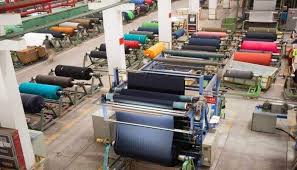Nigerian manufacturers are sounding the alarm as the Republic of Benin steadily rises as a leading textile hub in West Africa, drawing billions in investment and posing stiff competition to Nigeria’s struggling textile industry.
At the centre of this transformation is the Glo-Djigbé Industrial Zone (GDIZ), a massive industrial development located 45 kilometres from Cotonou. This textile and garment powerhouse is operated by UAE-based firm Arise Integrated Industrial Platforms (IIP) in a joint venture with the government of Benin Republic. The GDIZ currently hosts a 1,640-factory cluster, producing ready-made garments and home textiles primarily for export to Europe and the United States.
The zone is designed as a vertically integrated textile ecosystem. It leverages Benin’s status as the largest cotton producer in Africa and a member of the ‘C4+’ group, which includes Burkina Faso, Mali, Chad, and Côte d’Ivoire. Together, these countries account for 60% of Africa’s cotton production, as per data from the International Cotton Advisory Committee (ICAC).
According to reports, the GDIZ is targeting $1.4 billion in foreign direct investment (FDI) and aims to create 300,000 jobs by 2030. This development is already causing concern within Nigeria’s textile industry, which has faced years of decline due to underinvestment, outdated infrastructure, and inconsistent government policy.
Navdeep Sodhi, Managing Partner at Gherzi Sub Sahara and an international textile expert, told The Guardian that geopolitical shifts, especially the U.S.-China trade war, have benefited West African countries. He noted that the African Growth and Opportunity Act (AGOA), which provides duty-free access to U.S. markets for eligible Sub-Saharan African countries, has given West Africa a competitive edge.
“Despite the imposition of additional tariffs on China by the U.S., Sub-Saharan Africa remains attractive because of AGOA. African countries pay 0% while China pays between 27% and 145% on textile and garment exports,” Sodhi said.
However, Sodhi also warned that the expiry of AGOA in September 2025 could remove this key advantage unless the U.S. renews the trade pact. Encouragingly, the Office of the U.S. Trade Representative has scheduled a hearing for July 18, 2025, to review AGOA eligibility criteria, raising hopes of an extension. In the meantime, Africa’s duty-free access to the European Union offers exporters a critical fallback.
Benin’s example is already influencing neighbouring ECOWAS countries. Ghana and Togo have begun attracting large-scale FDI into textile manufacturing for export, signalling a regional shift. Sodhi believes West and Central Africa could become a global textile hub if the region builds robust value chains linking cotton production in Côte d’Ivoire to manufacturing centres in Cameroon.
With a population of nearly 500 million people, the West and Central African sub-region has the potential to serve both as a manufacturing base and a consumer market. The dual advantage of a skilled workforce and high cotton production makes this region an emerging hotspot for textile and apparel investments.
In Nigeria, concerns are growing about the country’s ability to compete. Executive Secretary of the Organized Private Sector Exporters’ Association (OPEXA), Olatunji Olarewaju, urged Nigerian policymakers to learn from Benin’s success. He called for the development of world-class industrial zones to boost non-oil exports, especially agro-allied and textile products. He said Nigeria must leverage opportunities presented by the African Continental Free Trade Area (AfCFTA) to tap into regional and international markets.
Olarewaju also welcomed the Federal Government’s recent decision to establish a Textile Board as a step in the right direction. “With the revival of our moribund textile industry in mind, the creation of the Textile Board shows that no power on earth can stop an idea whose time has come,” he stated.
Stakeholders argue that without urgent action, Nigeria risks being left behind in a sector where it once led the continent. As Benin, Ghana, and Togo rise in the textile value chain, Nigeria’s manufacturers are calling for bold reforms, investment in industrial zones, and implementation of export-driven policies to reverse the decline.
